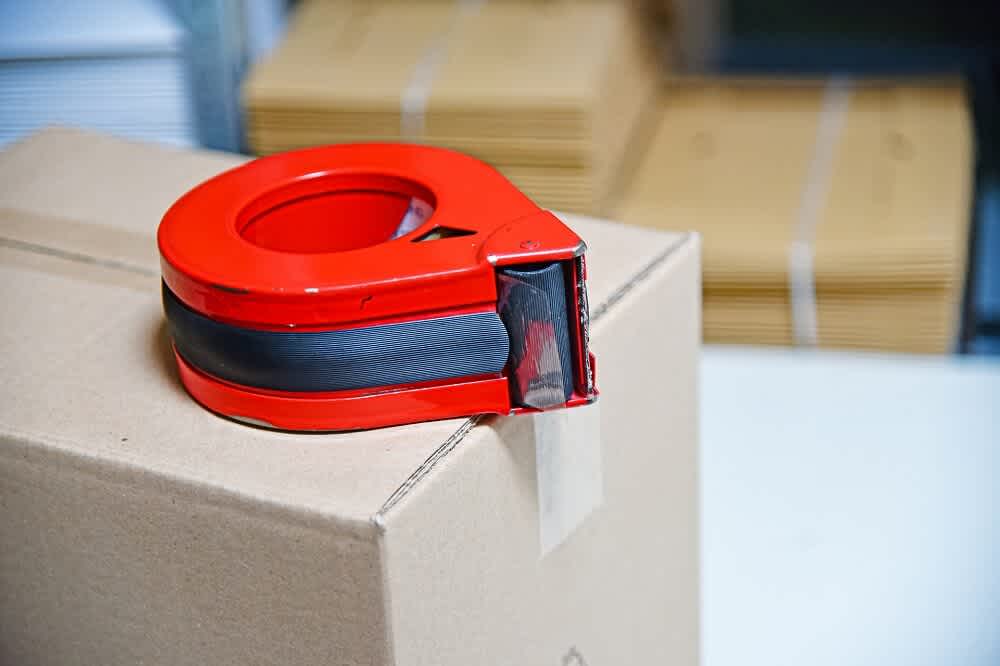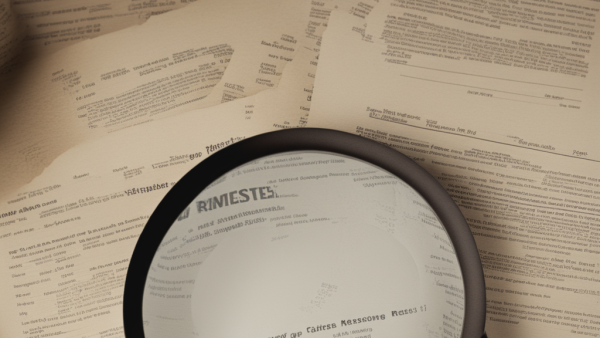
by Sam Franklin | August 08, 2022 | 11 min read
Packaging 101 – The ultimate guide to packing tapes used in eCommerce
Get fundedLast updated: September 03, 2022
If you’re in the eCommerce business, here you will learn what packing tape is and how to properly seal your boxes and parcels for shipping. You will also learn how to choose the right tape for packaging depending on your product and requirements.
Table of contents
What is packing tape?
We often use packing tape to seal boxes and secure their contents. By applying pressure on the tape and the box surface, adhesion will kick in, and the box will remain closed during transport and storage.
In eCommerce, packing tape is essential for:
Sealing boxes and other containers
Securing and protecting the merchandise
Maintaining the packages’ appearance
For example, if the packing tape can’t hold the box properly, the contents will be exposed (damages and losses are likely). Or, the box will look like it’s neglected and this will reflect on your brand and how you do things.
What tape should I use for packaging?
You can use brown packing tape for sealing cardboard boxes. It gives enough adhesion in normal conditions (e.g. no extreme temperature and humidity levels and fluctuations). Brown tape is common in warehousing and moving companies.
Brown packing tape is useful because of its strong adhesion and colour (matches or blends nicely with the cardboard box). On the other hand, clear packing tape also provides enough adhesion, but it doesn’t block or cover the view of the box itself (visually unobtrusive). Still, brown tape is more common.
Can you use any tape for packaging?
No. Keep in mind that you want to secure and protect your products inside the boxes. The tape should be strong enough to hold the box together and withstand its immediate environment.
For example, extreme cold can make common packing tape lose its adhesion. In this case, you should use cold-temperature tape. They’re specifically designed to remain sticky despite low temperatures.
If you seal the box with a common parcel tape, other people can easily remove it, tamper with the contents, and reapply the tape. To help prevent that, you should use water-activated tape. It bonds to the cardboard surface and creates a proper and strong seal.
What kind of tape do you use for cardboard?
Brown and clear tape are common. These have a pressure-sensitive adhesive backed with a polypropylene or polyester film.
Although the adhesive does the work, the polymer backing is still essential for strength and stability. Polypropylene and polyester films can withstand the usual forces in holding the box together.
Aside from brown and clear packing tape, you can also find different types of tape with other colours and prints. You can use these types of tape for colour coding, such as when you want to mark some boxes with fragile items (e.g. you can use printed tape for these).
For lightweight contents, you can use common carton-sealing tapes. But for heavy contents, you can use:
Water-activated tape (secure hold and deters theft), or
Strapping tape (durable because it’s reinforced by steel or polymer)
What is vinyl packaging tape?
Common types of tape are backed with a polypropylene film. Some, though, have a vinyl or polyvinyl chloride (PVC) material which is stronger or more durable than polypropylene (this depends on the tape’s make, specifications, and brand).
PVC is also a common synthetic polymer. Because of its strength, PVC is the material for many pipes, electrical cable insulations, flooring, and other construction applications. It’s now also the material for many packaging tapes, with its strength being useful in sealing and securing parcels and moving boxes.
Polypropylene or vinyl packaging tape?
Polypropylene tape is always a common and safe choice because:
It already meets most packaging needs
With strong adhesive for sealing light and heavy packages (you can find different types of tape that tell you if they’re good enough for such application)
It is economical
It is compatible with packaging machinery
However, polypropylene tape may lack flexibility (because of polypropylene’s high tensile strength), temperature and water resistance, and longevity. It can also be noisy when you use it to tape boxes. As a result, you may want to use another type of tape that generates less noise and offers more flexibility and resistance.
PVC or vinyl packaging tape can meet those requirements because they are:
Flexible and can stick to uneven surfaces
Can maintain their adhesion even in low temperatures
Quiet when you dispense them from a roll (ideal for large-scale operations)
But for ordinary box sealing and normal transport and storage conditions, polypropylene packing tape is already good enough. Vinyl packaging tape is also good, but it can be more expensive. It may also be incompatible with most packaging machinery because it’s a relatively new option as parcel tape.
When choosing parcel tape for your eCommerce business, it’s good to keep those pros and cons in mind to save money while ensuring the proper protection of your boxes and merchandise.
Can you use duct tape for packing?
No. Duct tape doesn’t work well on boxes because of the cardboard’s porous surfaces. It also leaves a sticky residue when you unpack the boxes.
You should always use packing tape, especially if you’re sealing the bottom of boxes (use heavy-duty ones if you will be packing heavy items). It creates a strong bond with cardboard surfaces and securely seals the box to prevent it from accidentally opening.
How much tape do I need for packaging?
If you’re using quality packing tape, you might need one roll for 30 boxes. It’s just a rough estimate because this depends on the box size. To save on tape, you should aim for only one strip down the carton’s centre seam. One strip of quality tape is often good enough to achieve a good seal. With this, you can save both time and money on packaging, and the savings quickly accumulate if you’re handling huge volumes of orders and deliveries.
How to use a packing tape dispenser?
To save time and effort, use a packing tape dispenser (handheld and with a safety blade). With a dispenser, you won’t need someone to assist you when you’re sealing the boxes. You can do it alone, which can help you save on labour costs.
Using a packing tape dispenser can help make the packaging more organised and consistent. Also, it’s easy to use because you only have to load a roll of tape onto the dispenser and position the roll so that the sticky side will face down.
Should you automate your packaging process?
You can manually apply the packing tape or use a handheld dispenser in the early weeks or months of your business. As your operations scale up and you’ve documented your packaging process, you can then apply automation. Aside from greater speeds, automation can also help ensure consistent quality in your packing.
When you load the packing tape into the packing machinery, ensure that it has no deformation, warping, or other distortions. These defects can make the tape break during high-speed automated packing.
Why is my packing tape not sticking?
One common problem with packing is that sometimes the tape doesn’t stick. Perhaps it’s too cold, which makes the adhesive fail. High temperatures and humidity levels can also cause the tape to lose adhesion. As a result, it’s important to choose a tape specifically designed for cold or humid environments.
If your packing tape doesn’t stick, another reason is the tape is too old already, or you stored it in an environment with low temperatures or high humidity levels. Also, packing tape may only be good for 12 months (not good for long-term storage). As a result, you should avoid storing too much packing tape and pick an order size appropriate to your delivery volume (rough estimate of one roll of tape for 30 boxes).
If you want your packing tapes to last long and maintain their adhesion, you have to store them in a:
Cool and dry place
4 to 27°C
40 to 50% relative humidity
Away from direct heat and sunlight
You also have to keep the tape in their plastic packaging until they’re ready for use. It also helps to do “first in, first out” in using the rolls of tape. This way, you help ensure that the tape will function perfectly, and you can prevent misshaping and deformities when sealing the boxes (and prevent expensive downtime and rework).
Why packing tape doesn’t stick in the cold
At low temperatures, adhesives lose their ability to flow into and form a bond with the carton’s corrugated surface. As a result, forming a secure bond and seal becomes impossible.
In cold temperatures, the tape’s adhesive also becomes brittle instead of staying soft and flexible. As a result, the adhesive loses its ability to bond. This comes from the packing tape’s viscoelastic property (elastic and viscous or with sticky consistency). The adhesive loses that sticky consistency at low temperatures, especially at sub-freezing levels.
What to look for when buying packing tape?
When choosing which packaging tape to use, consider the following:
Grade
Temperature
Adhesive
Colour
Width
Grade refers to the tape’s thickness and construction. Stronger tape has a higher grade and is ideal for sealing heavy boxes. Lower tape grades are still strong enough to hold a lightweight package.
You should also consider the temperature conditions your packages will be stored and transported. For instance, in cold temperatures, most types of tape will lose their adhesion and effectiveness, making the seal weaker and potentially increasing the risk for theft, damage, and loss of items.
Acrylic, hot melt and solvent-based are the different types of adhesives used in packing tape.
Acrylic adhesive also works well on plastic-based surfaces
A packing tape with a hot melt adhesive creates a strong bond with cardboard surfaces
Solvent adhesives are ideal for heavy-duty packaging (works well even in high temperature and humidity levels and other extreme conditions)
You should also consider colour when choosing packing tape. This is for branding and coding reasons. You may want your customers to easily remember your packaging or set your deliveries apart. You may also want to use a custom printed tape for colour-coding (e.g. red means fragile or requires extreme caution and long-distance transport).
You also have to consider width when choosing a packaging tape. A packaging tape for box sealing is often 48 to 72 mm (around 2 to 3 inches). These widths are already good enough for sealing a cardboard box up to 60cm wide. But for bigger boxes, you have to look for a wider packaging tape.
Other considerations when choosing a packaging tape
Aside from grade, temperature, adhesive, colour and width, you also have to think about the following:
Weight of the package
Stability of the package contents (e.g. shifting causes more stress on the seal)
Value of the items (use heavy-duty and wider tape to securely seal the box)
Length and width of the package
Strength of the box (tape should withstand even rough handling of multiple boxes)
Method of delivery or shipping (e.g. individual handling puts more pressure on the packaging tape)
Summary
To choose the best packing tape suitable for light and heavy packages, you have to note the following:
Does the tape provide superior adhesion?
Can it handle extreme temperatures (especially if packing, storage, and transport conditions are done in hot, humid, or cold conditions)?
Is clear tape or conventional brown parcel tape more suitable?
Do you require conventional parcel tape (just plain or clear tape) or printed tape (you can use printed tape for labelling and branding)?
Is a parcel tape with a water-activated adhesive more suitable (also known as gummed paper tape, which provides strong adhesion, making tampering extremely difficult)?
Are the packages’ contents highly valuable, and are you worried about theft and losses (gummed paper tape is also suitable here)?
Do you prefer a quiet dispensing parcel tape to reduce noise in your packing operations (use vinyl packaging tape or low-noise polypropylene tape)?
Is the parcel tape wide enough to securely seal your package (48 to 72mm or 2 to 3 inches is the standard or common width)?
Is your parcel tape compatible with your packaging machinery?
A conventional brown packaging tape backed with polypropylene film (48 to 72mm wide) is often a safe choice. But for extreme conditions and with additional requirements, you can use gummed tape or tape with water-activated adhesive, especially for heavier packages. You can also use vinyl packaging tape if you prefer quiet tape dispensing (low-noise polypropylene tape is also available).
Written by

Sam founded his first startup back in 2010 and has since been building startups in the Content Marketing, SEO, eCommerce and SaaS verticals. Sam is a generalist with deep knowledge of lead generation and scaling acquisition and sales.


